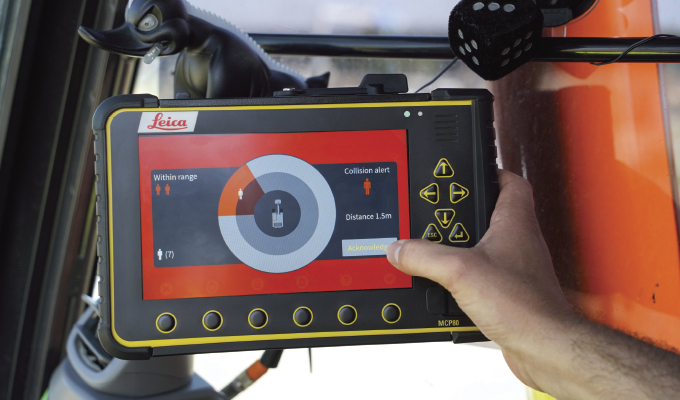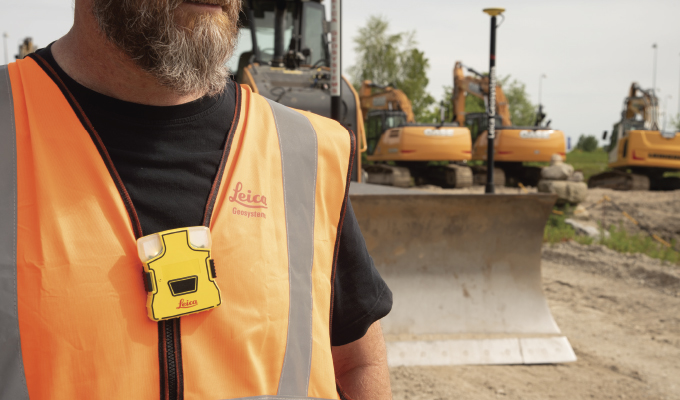When it comes to construction, the most important work occurs before the first shovel hits the dirt—or at least it should.
“If a contractor uses technology, like site positioning technology, the first thing they’re going to want to do is to go out and verify three major things before they move an ounce of dirt,” Justin Humphries, North American sales manager for Leica Geosystems, part of Hexagon, says. “The first thing is they need to check to make sure that the control that they’ve been given is accurate. That way, everything is tied back to a known control point and put where it needs to be put.
“The second thing is they need to confirm that all elevations they’ve been given to build off of are accurate,” Humphries adds. “And then the last thing they need to confirm is that the designs they were given are accurate. And, if done right, all those checks can be done before any dirt has been moved.”
Too often, workers in the industry gravitate toward what’s been passed down from generation to generation. When sitting in a machine grading a slope, many operators say they “can feel it in their bones.”
It’s nt until they meet with a technology provider and test technology that they realize how much it can help improve their operations.
“Historically, in the industry, most people start to move dirt before they perform those checks, and what happens is that you end up finding discrepancies or errors after you’ve already started to move dirt,” Humphries says. “We all know what that means—that’s rework, and people start losing money. Those initial checks could take a day, but they could save millions.”
A RENEWED FOCUS
But there’s more to site prep than just moving dirt. Companies must take into consideration the human preparation and protection that are necessary for success.
According to the CDC, the construction industry’s suicide rate is one of the highest of any industry. However, the official numbers likely don’t capture the full crisis facing the industry.
Federal numbers show that in 2016, the suicide rate (49.4 per 100,000) for men in the “construction and extraction occupations” was nearly twice the suicide rate for civilian working men between 16 and 64 years old in 32 states (27.4/100,000). It was also five times more than the construction industry’s fatal work-related injuries rate of 9.5/100,000 in 2018.
While the agency suggested additional research will help the industry understand why the suicide rate is higher for workers in construction than in other industries, job strain, long work hours and other “psychological risk factors,” such as depression and stress, could contribute to the rate.
The latest edition of The Civil Quarterly (TCQ) from Dodge Construction Network, produced in partnership with Infotech and Hexagon, revealed that only about a third of contractor respondents (34%) say that staff at their companies have “good access to resources that help address mental health issues.” While this survey is specific to civil contractors, it’s likely indicative of the entire construction industry.
Roughly three in four (77%) of civil contractors indicate “some level of effort.” However, only about a third of respondents use employee assistance programs and provide information on where workers can access mental health assessment websites, the most widely used means of addressing mental health.
When asked about their organization’s state of mind/mental health compared with 5 years ago, twice as many civil contractors (36%) report improvements than worsening conditions (15%).
This could be the result of the high levels of job security at most companies in an industry struggling to attract and retain workers. It could also be due to the increasing attention to mental health, which has occurred since the COVID-19 pandemic.
“Seeing mental health improve because visibility to long-term plans and daily activity benchmarks is improving—everybody’s on the same page reading the same sheet of music, so we’re able to measure ourselves and aim at the same target,” Humphries says.

THE PATH FORWARD
Aaron Witt, CEO of BuildWitt, believes there’s no easy answer to addressing the mental health dilemma on the jobsite, but it will require courage to speak out.
“I don’t know if there’s a single reason why, but my mind goes very quickly to the fact that this is a macho, manly big-time industry, and you don’t want to appear stupid; you don’t want to appear weak. You want to be accepted by the tribe,” Witt says. “The tribe is a bunch of tough guys, and you’re going to do what you need to do to blend in.
“So, if you’re hurting, or you’re getting divorced, or you have a substance abuse issue—whatever it is, chances are you’re going to cover that up because you don’t want to be perceived as the weak one in the group,” Witt adds. “So, I think that’s a big reason.”
Witt says success starts with how an organization cares for its people and makes itself a place people want to work. Witt often shares his experience with counseling with his team, hoping they’ll warm to the idea of talking with a professional if needed.
“I’m guilty of this too, especially as a leader of an organization, you get caught up in the day-to-day, and you get buried under the lawyers, and the paperwork and the contracts and the insurance and this and that,” Witt says. “And a month goes by, and you haven’t gotten to the jobsite; you haven’t taken the time to shake people’s hands, but that’s all it takes.
“Maybe just once a week getting out onto the jobsites, shaking peoples’ hands, and saying ‘hey, how are you; how’s your family; thank you; I really appreciate you; I appreciate everything you’re doing,’” Witt says. “The organizations that don’t have a big workforce challenge right now are those organizations where people at the top are out in the field very often, and all they’re doing is just saying thank you.”
CLOSING THOUGHT
When it comes to site preparation, the focus often centers on avoiding costly mistakes. While deploying the solutions that help avoid those mistakes and help save money is a noble effort, the most significant savings come when companies focus on their teams. Often the most important investment isn’t made in a piece of equipment or technology but in people. After all, that’s what truly powers an organization.
About the Author:
Troy Dahlin is vice president of heavy construction US/Canada with Leica Geosystems, a part of Hexagon. For more, visit leica-geosystems.com.
Modern Contractor Solutions, May 2023
Did you enjoy this article?
Subscribe to the FREE Digital Edition of Modern Contractor Solutions magazine.



